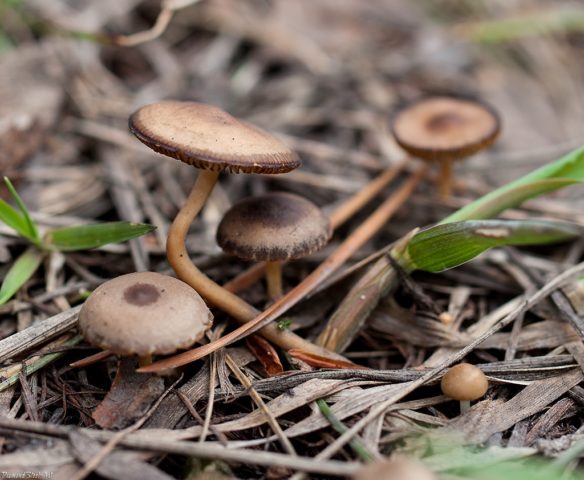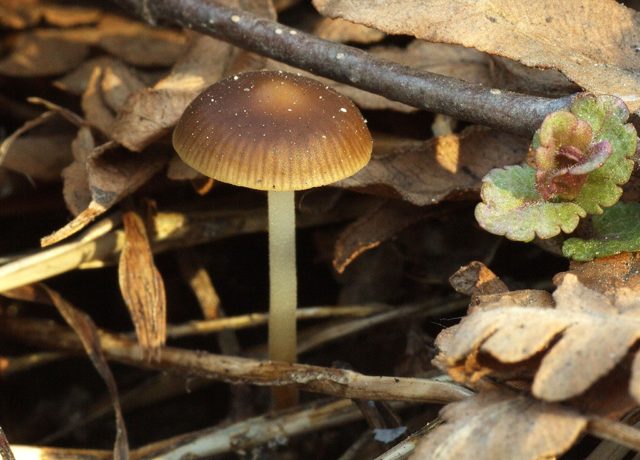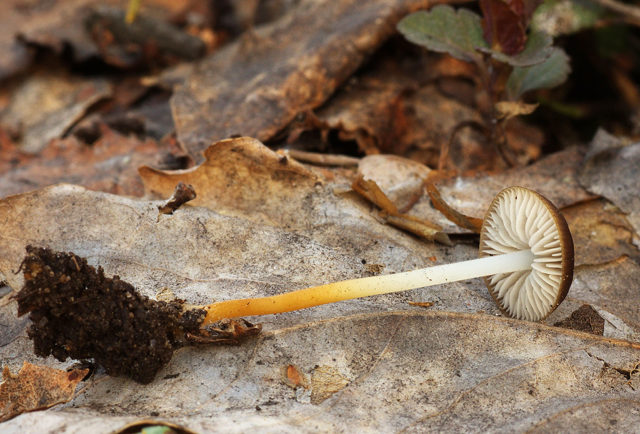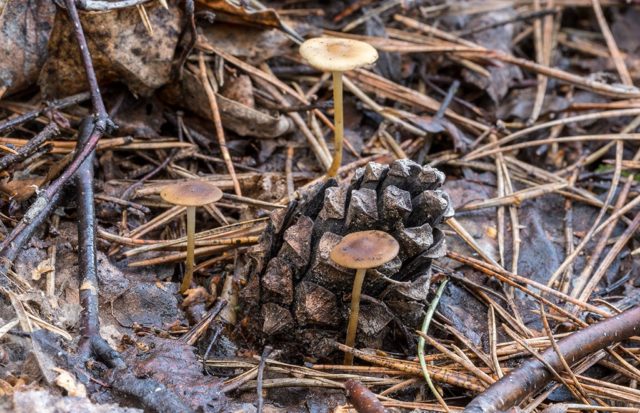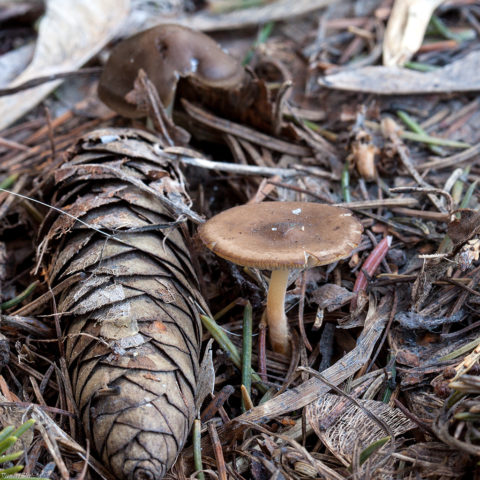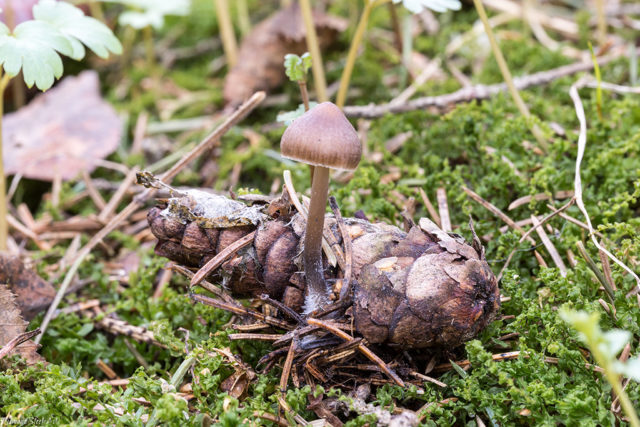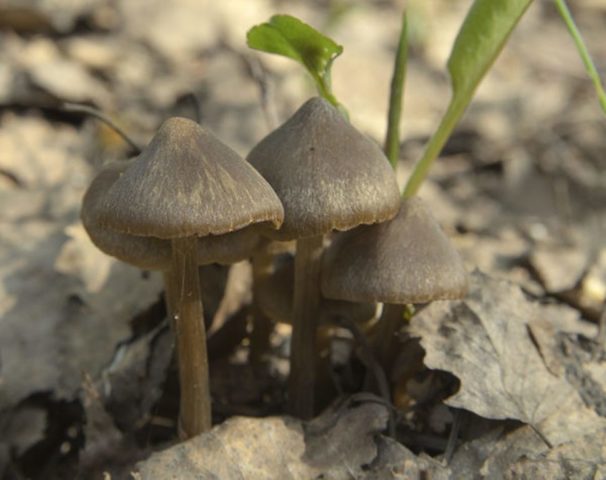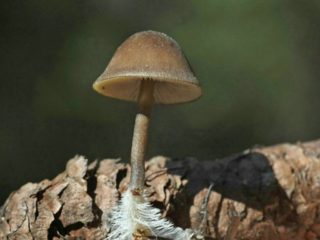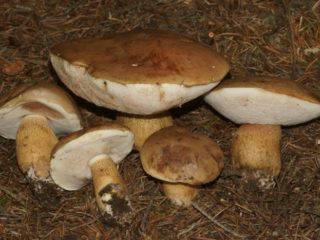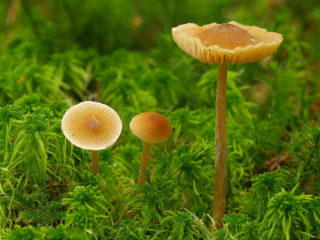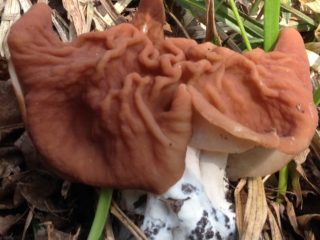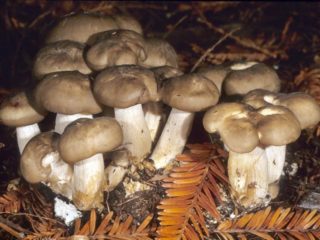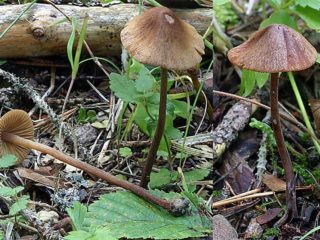Content
Cutting strobilus is a conditionally edible representative of the mushroom kingdom from the Fizalakriev family. The variety can be recognized by its miniature cap and long, thin stem. The mushroom grows in coniferous forests on rotting cones, in moist, well-lit places. Begins fruiting from mid-April to early October. In order not to be mistaken during collection, you need to familiarize yourself with the varietal characteristics and view the photo.
Where does the cutting strobilurus grow?
Cutting strobilus can be found in spruce and pine forests. It grows exclusively on fallen decaying cones that are buried in a damp, needle-like litter. Cutting strobilurus grows in damp, sunny places. Only an insignificant part of the fungus is visible above the surface of the earth, the rest is hidden in the spruce litter.
What does a cut Strobilurus look like?
To recognize a conditionally edible specimen, you must have an idea of its appearance.
Cutting strobilurus has a miniature, hemispherical cap, which partially opens with age, leaving a small tubercle in the center.
The hat is colored brown with a pronounced red-orange tint. The color depends on the place of growth and the composition of the soil. The hat is thin and brittle. The lower layer is lamellar, covered with frequent, thin, brittle plates of snow-white or lemon color.
The whitish pulp has a pleasant mushroom aroma, but a bitter taste. Despite these characteristics, the cuttings strobilurus has its fans who know how to cook delicious, aromatic dishes from young specimens.
The stem of the cuttings strobilurus is thin and very long. Height is 10 cm or more. Most of them are hidden in the spruce substrate. The brownish-red surface is smooth, no more than 2 mm thick. The pulp is tough, fibrous.
Is it possible to eat a cuttings strobilurus
The species belongs to the 4th group of edibility. Only the caps of young specimens are used for food, since the flesh at the legs is tough and fibrous. Before cooking, the caps are washed and boiled for 20-30 minutes. Then they are thrown into a colander to remove excess moisture. Prepared mushrooms can be fried, stewed and pickled. But, in order to feed the whole family, it is necessary to spend more than an hour picking mushrooms, since when boiling, the size of the cap is reduced by 2 times.
Mushroom taste
Cutting strobilurus does not have good taste. The pulp is juicy, with a pronounced mushroom aroma. The taste is bitter, so before cooking, the caps are soaked and boiled for about half an hour in salted water.
Benefits and harm to the body
Like all mushrooms, the flesh of the cuttings strobilurus is rich in proteins and amino acids. It also contains carbohydrates, micro and macro elements, vitamins of group A, B, C, D, PP. But since the mushroom is considered a heavy food, it is not recommended to give it to children under 5 years old, pregnant women and people who suffer from gastrointestinal diseases.
False doubles
This representative of the mushroom kingdom, like any plant, has its fellows. These include:
- Twine-footed, conditionally edible species growing in spruce and pine forests. The hat of the variety is colored brown, dark red or brownish yellow. The surface is thin and smooth. The leg is long, reaching 10 cm or more. Only young caps are used for food, since in old specimens and at the legs, the flesh is tough and fibrous. Due to their pleasant taste and smell, mushrooms are fried, stewed and pickled.
- Edible sludge, juicy, belongs to the 4th group of edibility. Only young specimens are eaten, which come into fruiting from late May to mid-November. The hemispherical cap is small, no more than 15 mm in diameter. Grows in groups in spruce and mixed forests in all regions of Russia.
- Pine-loving mycena is an edible specimen. Since the pulp exudes an unpleasant chemical or rare aroma, the mushroom harvest is soaked and boiled before cooking. The bell-shaped cap, up to 40 mm in diameter, straightens with age, keeping a small tubercle in the center. The surface is smooth, dark brown colored. The lower layer consists of plates partially adhered to the leg. The pulp is thin and light. The species begins to bear fruit from May to the end of June.
- Spring entoloma is a poisonous variety that grows in coniferous and mixed forests. The cultivar can be distinguished by its dark stem and gray-brown cap, which fades over time.
Collection rules
Since the cuttings are small in size, the collection is carried out extremely carefully, examining every corner of the needle-like substrate. The found specimen is carefully twisted out of the ground or cut with a sharp knife. The formed hole is covered with earth or spruce needles. Collecting mushrooms is carried out in shallow baskets, since when collecting in large baskets, there is a possibility of damage to the lower layer.
Use
This representative of the mushroom kingdom is often used fried and pickled. Before cooking, the mushroom harvest is soaked and boiled.
Since the cuttings strobilurus has an increased fungitoxic property, suppressing the growth of other fungi, fruiting bodies are used for the preparation of fungicides of natural origin.
Conclusion
Cutting strobilurus is a conditionally edible variety that grows in coniferous and mixed forests on fallen decaying cones. Distributed throughout Russia, bears fruit throughout the warm period. In order not to be mistaken during the collection and not to collect false doubles, you must familiarize yourself with the external description and view the photo.
